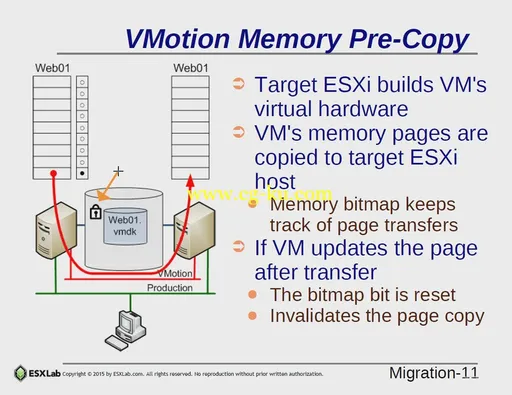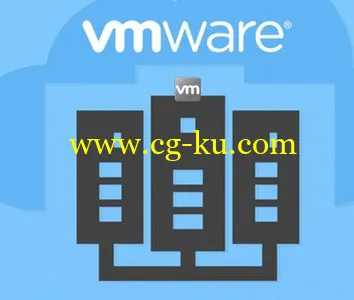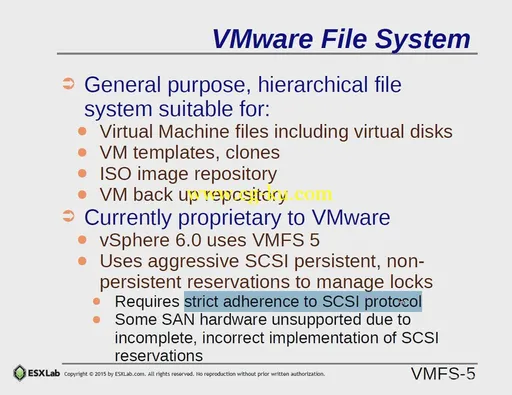
VMware vSphere 6.0 Part 3 - Storage, Resources, VM Migration (2016)
MP4 | AVC 441kbps | English | 1224x946 | 15fps | 6 hours | AAC mono 47kbps | 1.04 GB
Genre: Video Training
VMware vSphere 6.0 is the platform businesses depend on to deploy, manage and run their virtualized Windows and Linux workloads. In this course you will learn how to connect to and use shared SAN Storage including Fibre and iSCSI storage, to Format and Expand VMFS volumes, how to Resource Tune Virtual Machines, how to create and tune Resource Pools, and how to perform cold, VMotion and Storage VMotion migrations.
Learn Storage, VMFS, Resource Management and VM Migrations
This course covers four major topics that all vSphere 6 vCenter administrators must know:
First, we look at shared Fibre and iSCSI shared storage. We start with an overview of features and capabilities of suitable SANs. We move on to discuss storage network design for redundancy and performance, SAN security with Zoning and Authentication, iSCSI hardware and Software initiators, how to scan and review SAN LUNs and various Storage views. We complete the section with a presentation of NFS v4.1 file shares (new to vSphere 6.).
Next we look at VMware's cluster file system - VMFS. We learn how to create VMFS partitions and their properties. We look at basic capacity management (and what can go wrong) and offer two strategies for managing VMFS capacity. We go on to talk about Path Selection Policies (PSPs) and explain the trade offs of VMware's three provided PSPs. We show you how to select the optimal PSP based on your storage network design and your SAN's capabilities.
We move on to discuss Resource Management and Resource Pools. Effectively managing CPU and Memory is critical to host and VM scalability. VMware provides three tunables - Reservations, Shares and Limits, to help you delegate resources as you require. We show you how to assess resource needs and how to create/use Resource Pools. Finally, we explain Expandable Reservations and show you how to use them safely.
Finally, we look at VM migrations. VMware supports cold (powered off) migrations to a new ESXi host or datastore. Next we look at VMotion hot VM migration - where we hot move a running VM to a second ESXi host. We look at CPU compatibility requirements and show you how to tell if your physical host CPUs are VMotion compatible. Finally, you will learn how to perform Storage VMotion (hot move a VM from one datastore to another) and the Use Cases for Storage VMotion.
The skills you will acquire in this course will help make you a more effective vSphere 6 administrator.


发布日期: 2016-02-25